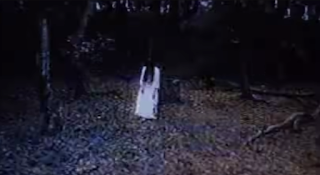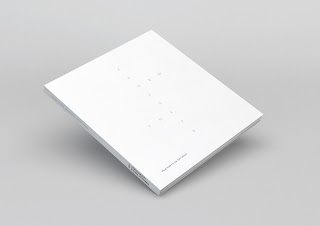A Digital Haunting of the Analogue World: Hideo Nakata's Ring
This text is available to read in full in Dreamt by Ghosts: Notes on Dreams, Coincidence, & Weird Culture available from Tenement Press here.
Hideo Nakata’s Ring is haunted by the future of digital technology. Behind the conscious
horror of the story there is a larger, unsurfaced fear, lingering in the subconscious of the
film: that the world of analogue is being replaced by the world of digital. Most of us had sent
an email by 1998, the year the film was released, and had experienced the threat of a
computer virus at a time when we were still watching video tapes. In Ring, the digital applies
its logic to the analogue realm, which then begins to enact a future technology.
The plot of the film is focussed on a videotape that kills anyone who watches it
within a week; they’re stamped with their own deadline for obsolescence. The film gluts on
images relating to analogue devices: a fax-machine, an instant camera, VHS recorders, cube
monitors. There is only a single call received by mobile phone in the whole film.
Reiko Asakawa, the main character, has watched the tape and counts down the days
to her death. One night, Reiko wakes to find her son Yoichi watching the cursed videotape
and runs to cover his eyes. Anyone who falls under the curse of the tape can see the evidence
of this by taking an instant Polaroid of their face: the proof is in the melted and warped
image printed. Past technologies refuse to remain stable; polaroid distorts in the wake of the
hyper-digital technologies that are already changing the world. Made two years before the
end of the century, it’s worth remembering that the film was directed when fear of the
‘Millennium Bug’ was beginning to peak. The fact that anyone who watches the videotape
dies within a week also suggests, perhaps, that if we get ‘stuck’ in the analogue world we can
never be digital born.
As Reiko counts down the days to her death, she researches the source of the tape’s
curse, discovering that it came about through the suicide of a Spiritualist—a seer—called
Shizuko, which had taken place decades before. Shizuko’s daughter Sadako had then used
psychic forces to kill a journalist who had derided her mother’s abilities. When the world
races away from inner-vision and ritual—towards the alienation of algorithmic thinking—
dark forces emerge. Reiko works with her ex-husband Ryūji—who is also under the curse—
to try and find Sadako’s corpse, which they discover at the bottom of a well. They find out
that the curse was born when a video tape captured her rage. Reiko survives, believing this is
because they have found and freed Sadako, but Ryūji dies when Sadako’s spirit comes out of
the well and through the TV, frightening him to death. Although the new world might
promise reunification and harmony, this is something that it can’t deliver for the estranged
couple. Ryūji as a character is also a plot device that is completely hauntological: the exhusband
represents Reiko’s past, aligning him with analogue; after his death he continues
in Yoichi, whose future—like any child who was a child at that time—can only be digital.
We then discover the real reason why Reiko has survived: if the videotape is copied
and passed on to someone else within a week, the curse is broken. A ring needs to be
formed. In other words, the videotape needs to be treated like one of the thousands of
emails that asks the sender to forward it on to someone or they will receive bad luck.
Almost a decade after Ring was released, YouTube was swamped by the Katu Lata
Kulu message. People received an email or a post beneath their YouTube video saying that
in 1945 a young girl named Katu Lata Kulu came to America from Africa in a grey boat. A115
mysterious man killed her by cutting the words LATUALATUKA into her back. Now that you
have read this message, she will come to your house on a full moon and steal your soul
unless you do the following: copy and paste the chain letter and post it as a comment
beneath three other videos. In other words: free the spirit from the well by copying the
message, or you’ll die too.
What’s remarkable about Ring is that it captured this collective fear while it was still
nascent in the culture. It’s both aware of this cultural shift but also blind to it: no one could
have known that videotape culture would die out so quickly (DVD rentals did not surpass the
rentals of VHS until 2003); that the analogue world it depicts was in its final epoch. It took
more effort to copy a complete video tape than to simply copy and paste a message digitally
in a computer, making the new world would be primed for curse culture to go viral and the
collective subconscious knew it.
Copy.
Paste.
Repost.
Digital developed with an inbuilt capacity for the perennial fear of being cursed to become
part of our daily lives. The fear that began to haunt our collective analogue brain is
everywhere in our digital awakening.
This text is available to read in full in Dreamt by Ghosts: Notes on Dreams, Coincidence, & Weird Culture available from Tenement Press here.





Comments